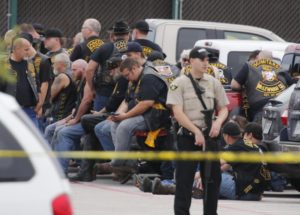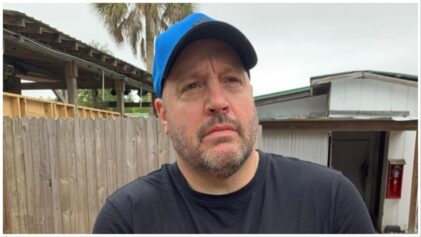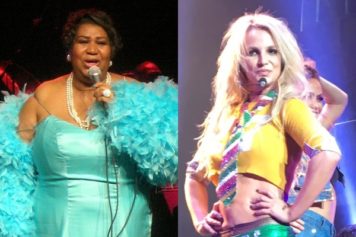If you take a look at any of the crime scene photos of Waco, Texas, following a fatal shootout between rival biker gangs, you’d probably be struggling to put the pieces of the story together.
Image after image shows police officers nonchalantly standing around the perimeters of the yellow tape in their daily uniforms.
Some are sporting baseball caps, while others settle for a simple pair of sunglasses. It’s all the protection they need.
Hard to imagine the massive group of men behind them, casually scrolling through their cellphones and leaning on pickup trucks, are responsible for the deaths of nine people and seriously injured 18 others.
But unlike the unrest that swept Baltimore and Ferguson, Missouri, there was no calling for the National Guard. Officers were not dressed as if they were ready to go to war. Suspects were not being “folded like a pretzel” or getting a knee to the back of the head.
These suspects, the ones responsible for those nine deaths, are not even placed in handcuffs or leg restraints or even separated into smaller groups.
It’s an image that’s strikingly different than the images that captured national attention in Ferguson and Baltimore when police responded to protesters with riot gear and military-style weaponry.
In both cases, even the National Guard was deployed to get control of the situation.
Social media users made it clear that they took serious issue with the different approaches that were taken with the crowd of over 100 bikers involved in a deadly shooting compared to the protesters in Ferguson and Baltimore.
“They’ve recovered at least 100 weapons,” activist Deray McKesson tweeted. “The [National] Guard would be mobilized now if, black.”
“Man! Even Waco biker gang members who kill people get treated better than unarmed black men,” another user tweeted. “Can you believe it?”
In addition to the differences in the police response, users also found issue with the differences in media coverage.
McKesson explained that the images coming from Waco were capturing the essence of the “intersection of media bias/race and policing.”
With this tragedy, media outlets have not tried to paint the bikers as “thugs” or tried to dig up extensive criminal backgrounds.
All the usual tactics that have been reserved for Black victims and frustrated protesters were tucked away in the case of a group of white men who, according to reports from local stations, arrived at the Twin Peaks restaurant ready for a brawl.
One tweet from New York Times columnist Charles Blow read, “When are we going to start asking how many of the [people] in the Waco slaughter grew up in single-parent homes? Oh, that’s right.”
The backlash by activists on social media also spurred a smaller debate about whether or not each of the situations actually lent themselves to a fair comparison.
“Don’t forget that [Waco] was an isolated incident,” one user, who promoted the Black Lives Matter movement in their bio, tweeted. “Ferguson, Baltimore, NY these are not isolated.”
It’s a fair note to consider although it certainly doesn’t excuse all of the differences in both police response and media coverage of what was clearly a senseless act of violence that ushered too many people into an early grave.




